Adaptive criterion setting in perceptual decision making
- PMID: 21909162
- PMCID: PMC3168885
- DOI: 10.1901/jeab.2011.96-155
Adaptive criterion setting in perceptual decision making
Abstract
Pigeons responded in a perceptual categorization task with six different stimuli (shades of gray), three of which were to be classified as "light" or "dark", respectively. Reinforcement probability for correct responses was varied from 0.2 to 0.6 across blocks of sessions and was unequal for correct light and dark responses. Introduction of a new reinforcement contingency resulted in a biphasic process of adjustment: First, choices were strongly biased towards the favored alternative, which was followed by a shift of preference back towards unbiased choice allocation. The data are well described by a signal detection model in which adjustment to a change in reinforcement contingency is modeled as the change of a criterion along a decision axis with fixed stimulus distributions. Moreover, the model shows that pigeons, after an initial overadjustment, distribute their responses almost optimally, although the overall benefit from doing so is extremely small. The strong and swift effect of minute changes in overall reinforcement probability precludes a choice strategy directly maximizing expected value, contrary to the assumption of signal detection theory. Instead, the rapid adjustments observed can be explained by a model in which reinforcement probabilities for each action, contingent on perceived stimulus intensity, determine choice allocation.
Keywords: expected value; generalized matching law; key peck; optimal choice; pigeon; psychophysics; signal detection theory; yes-no task.
Figures
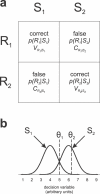






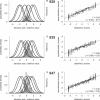
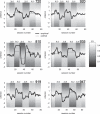
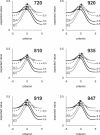

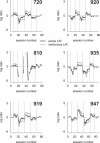

Similar articles
-
Suboptimal criterion setting in a perceptual choice task with asymmetric reinforcement.Behav Processes. 2013 Jun;96:59-70. doi: 10.1016/j.beproc.2013.02.014. Epub 2013 Mar 1. Behav Processes. 2013. PMID: 23466903
-
The sunk cost effect with pigeons: some determinants of decisions about persistence.J Exp Anal Behav. 2012 Jan;97(1):85-100. doi: 10.1901/jeab.2012.97-85. J Exp Anal Behav. 2012. PMID: 22287806 Free PMC article.
-
Signal probability, reinforcement and signal detection.J Exp Anal Behav. 1979 Nov;32(3):373-86. doi: 10.1901/jeab.1979.32-373. J Exp Anal Behav. 1979. PMID: 512570 Free PMC article.
-
Acquisition of choice in concurrent chains: Assessing the cumulative decision model.Behav Processes. 2016 May;126:82-93. doi: 10.1016/j.beproc.2016.03.011. Epub 2016 Mar 19. Behav Processes. 2016. PMID: 27005579 Review.
-
Toward a unified theory of decision criterion learning in perceptual categorization.J Exp Anal Behav. 2002 Nov;78(3):567-95. doi: 10.1901/jeab.2002.78-567. J Exp Anal Behav. 2002. PMID: 12507020 Free PMC article. Review.
Cited by
-
Recording single neurons' action potentials from freely moving pigeons across three stages of learning.J Vis Exp. 2014 Jun 2;(88):51283. doi: 10.3791/51283. J Vis Exp. 2014. PMID: 24961391 Free PMC article.
-
Decision criterion dynamics in animals performing an auditory detection task.PLoS One. 2014 Dec 8;9(12):e114076. doi: 10.1371/journal.pone.0114076. eCollection 2014. PLoS One. 2014. PMID: 25485733 Free PMC article.
-
Stimulus-response-outcome coding in the pigeon nidopallium caudolaterale.PLoS One. 2013;8(2):e57407. doi: 10.1371/journal.pone.0057407. Epub 2013 Feb 20. PLoS One. 2013. PMID: 23437383 Free PMC article.
-
Undesirable Choice Biases with Small Differences in the Spatial Structure of Chance Stimulus Sequences.PLoS One. 2015 Aug 25;10(8):e0136084. doi: 10.1371/journal.pone.0136084. eCollection 2015. PLoS One. 2015. PMID: 26305097 Free PMC article.
-
Stimulus Context and Reward Contingency Induce Behavioral Adaptation in a Rodent Tactile Detection Task.J Neurosci. 2019 Feb 6;39(6):1088-1099. doi: 10.1523/JNEUROSCI.2032-18.2018. Epub 2018 Dec 10. J Neurosci. 2019. PMID: 30530858 Free PMC article.
References
MeSH terms
LinkOut - more resources
Full Text Sources

